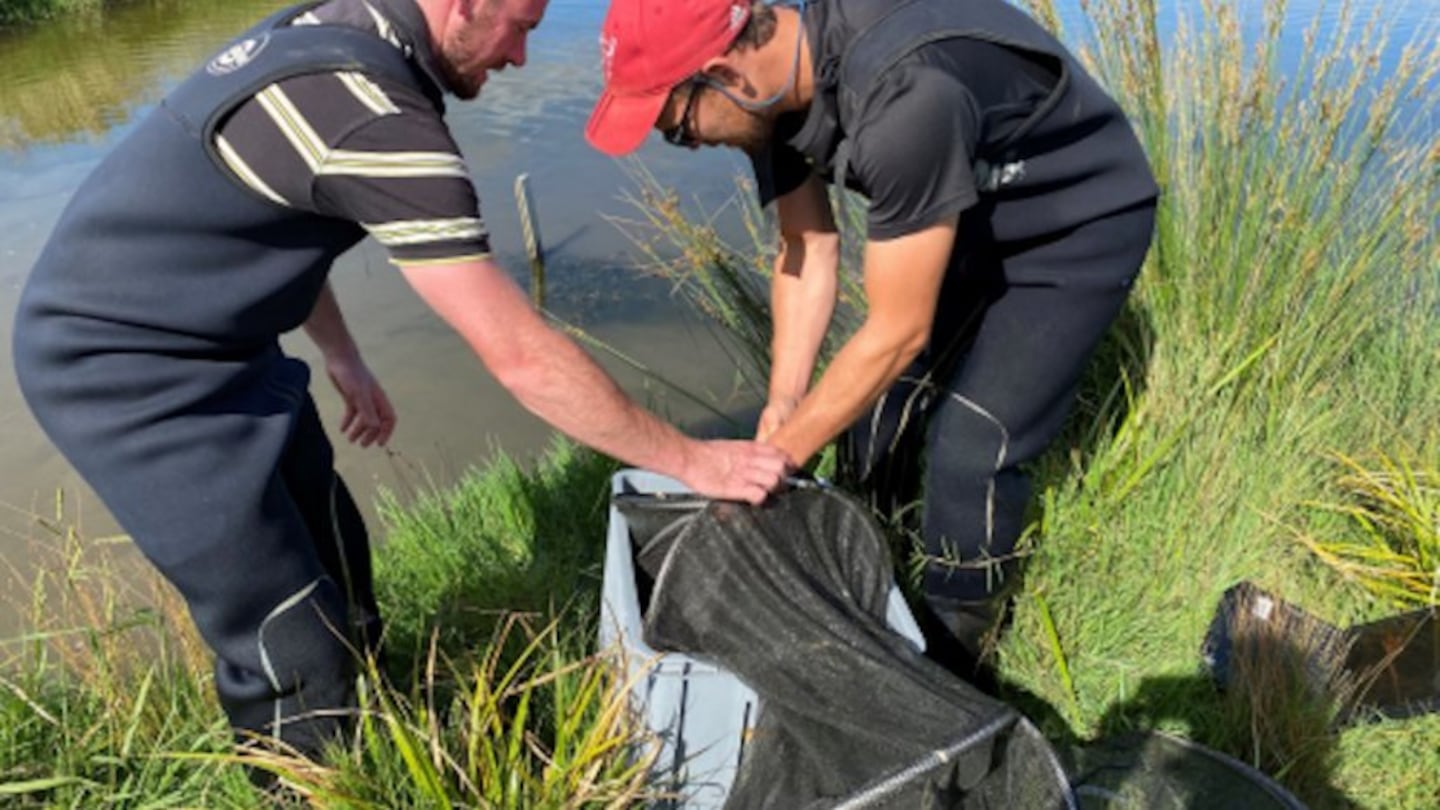It has taken a couple of years but tuna hinahina (shortfin eel), tuna kuwharuwharu (longfin eel), and inanga have returned to the Hawke’s Bay park’s Waikahu constructed wetland.
Te Wai Mauri director Te Kaha Hawaikirangi says Waikahu wetlands focused on restoring the mauri of the awa by providing new habitat for mahinga kai and taonga species.
“Two years on from the creation of the wetland we are blown away by its success, it’s great to see the fruits of the mahi blossom. Poipoia te kakano kia puawai.”
Te Wai Mauri Trust is part of the group including Ngāti Kahungunu Iwi Inc, Hawke’s Bay Regional Council, and Napier Port, which built the 15-hectare wetland in 2018 to boost habitat for freshwater fish and birdlife after declining species.
As the wetland lies two metres above the Tūtaekurī River, it includes a fish pass that mimics a small stream, with resting pools for fish to migrate into the wetland.
Regional Council freshwater ecology technician Andrew Horrell says the results are a step in the right direction to increasing wetland habitat in Hawke’s Bay.
Attracting birds too
“We’ve lost over 95% of our wetlands in Hawke’s Bay, and results like this show that, if we can create some habitat, the fish will find it pretty quickly and make it their home,” Horrell says.
As well as fish, bird species have returned, including a full range of ducks, teal, dabchicks, scaup, royal spoonbill (Kotuku ngutu papa) and critically endangered species such as bittern (Matuku) have been nesting on the lake. Even migrant species such as the white-winged black tern have been spotted visiting the site.
Researchers have also found fish at the site that are great kai for wading birds like bittern including common bully, gambusia, tadpoles, and goldfish.
Predator control groups are regularly checking traps to reduce the number of mustelids, feral cats, hedgehogs and rats so that the birds that have a better chance of survival and nesting success.



